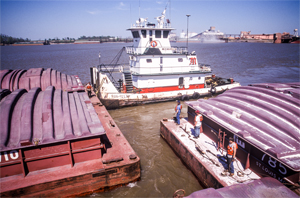Nearly five years after the initial version was made public, a U.S. regulatory regime for the inspection of towing vessels is close to becoming law.
The Department of Homeland Security sent the rule, known as Subchapter M 46 CFR, to the White House Office of Management and Budget on Feb. 12 for final review.
This final stage in the administrative process typically takes about 90 days. The rule is then published in the Federal Register.
“It would be prudent to expect publication sometime in June,” said Jennifer Carpenter, chief operating officer of the American Waterways Operators (AWO).
Vessel operators who have kept up with the rulemaking process already will be prepared for the final version of Subchapter M, Carpenter said.
“I think companies that have been under a safety management system and that have been paying attention and staying on top of vessel maintenance are going to be in good shape when it comes to this rule,” she said.
Since the rule’s first publication in August 2011, the Coast Guard has made revisions, which have not yet been seen by the public. In the next few weeks the industry will finally discover what those changes are.
“We are going to go through it with a fine-toothed comb to make sure there are no unintended consequences or anything that missed the mark,” Carpenter said. “I think the basic structure of the rule will be there.”
One controversy over the proposed rule is that Subchapter M allows two methods of compliance. Operators can implement a written towing safety management system (TSMS). This system will permit third-party organizations to conduct TSMS audits and surveys, certified by the Coast Guard.
The second method permits compliance through an inspection by the Coast Guard. Carpenter has said that everyone should have a TSMS, because she believes it is the best method to ensure safety in the industry. But many operators argue that the Coast Guard inspection is more cost effective for smaller companies.
The AWO has already established a Responsible Carrier Program, which the Coast Guard said in June was close to being approved as a towing safety management program.
Companies that have not prepared for this new inspection regime “will have some work to do,” Carpenter said. They should review the August 2011 proposed rule, audit their internal safety management system if one is in place, and look for information from the Coast Guard and the AWO. “Plan now to take advantage of the many opportunities that will be available for post-publication education and assistance beginning this summer,” she said.
Subchapter M provides time for operators to get into compliance. Owners and operators who choose the TSMS option have two years from the effective date of the final rule to create their safety management plan and have it approved and certified by a third party, according to the August 2011 proposed rule.
Four years after that step, companies must bring all vessels into the TSMS and get certificates of inspection. However, the rule proposes that owners and operators bring 25 percent of their fleet into compliance each of those four years to avoid overloading the Coast Guard and third-party inspectors and auditors.
“Under the proposed rule it would take about six years until 100 percent of the affected fleet has a COI,” Carpenter said, referring to certificates of inspection.

